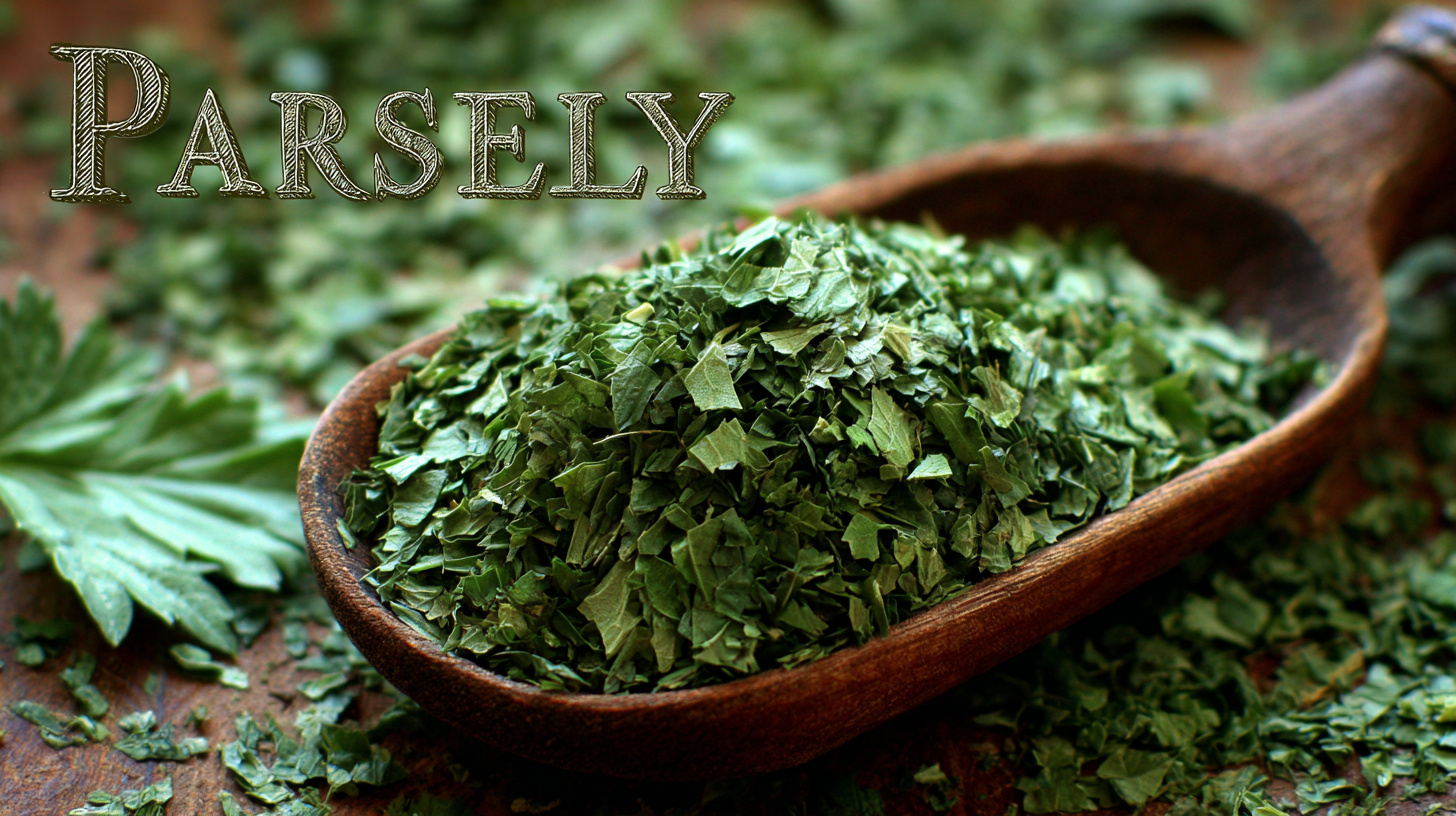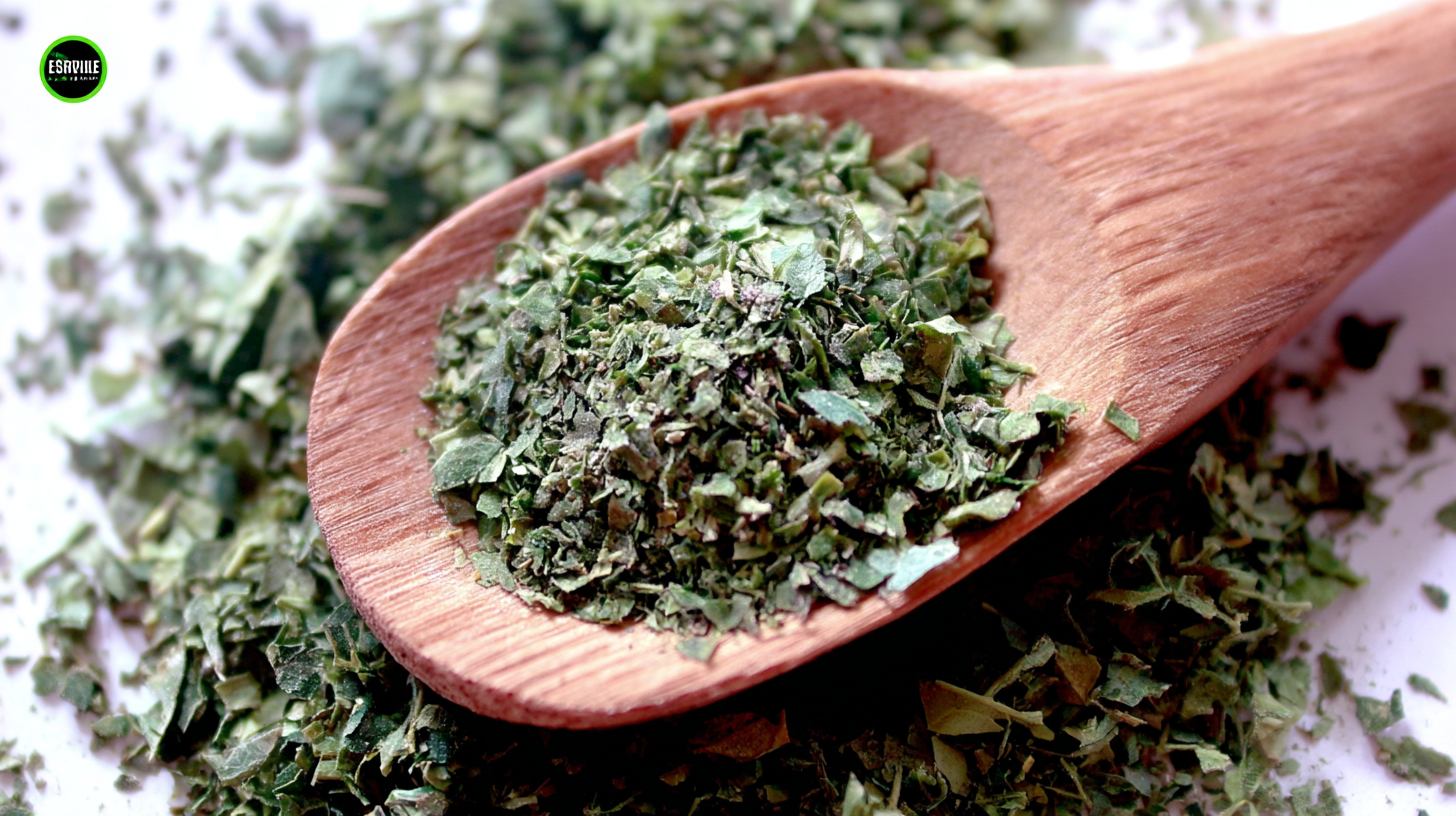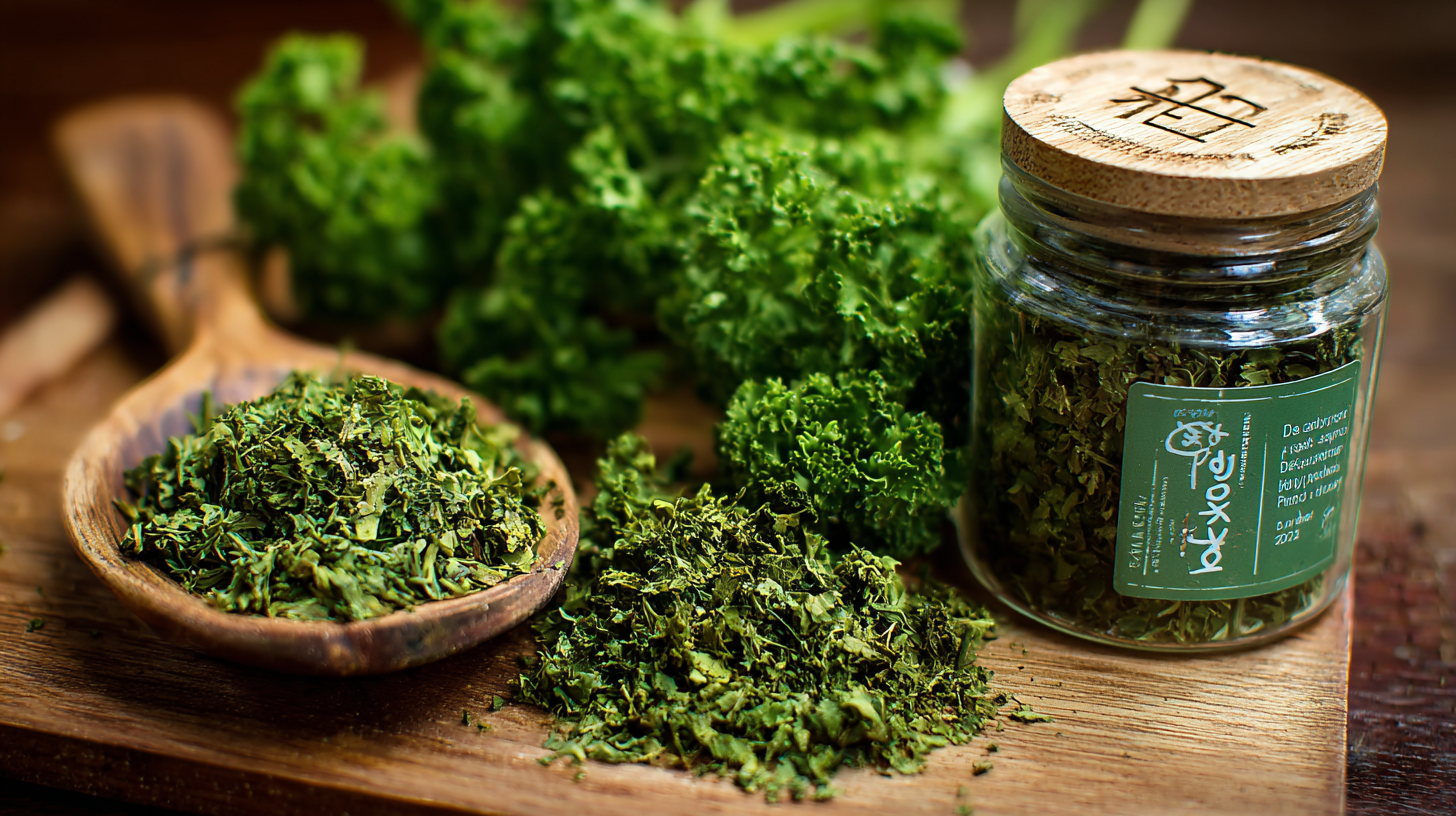In the global spice market, the demand for high-quality Dried Parsley continues to soar, driven by culinary innovation and an increasing focus on natural flavorings. According to a recent market research report by Mordor Intelligence, the global dried herbs market was valued at over $3 billion in 2022, with parsley being one of the most sought-after herbs, showcasing a growth rate of approximately 5% per annum. This burgeoning demand not only underlines the essential role of Dried Parsley in various culinary applications but also highlights the critical importance of after-sales service and maintenance costs in the supply chain. As buyers seek reliable suppliers who can provide consistent quality and effective customer support, understanding the nuances of these aspects can set successful importers and distributors apart in a competitive landscape. By uncovering the secrets behind the best Dried Parsley products, stakeholders can ensure product excellence while remaining responsive to the market’s evolving needs.

Selecting high-quality dried parsley is crucial for businesses in the culinary and food processing sectors. The herb’s flavor, aroma, and color can significantly impact the final product, influencing customer satisfaction and brand reputation. In an industry where consumer preferences lean towards fresh and authentic tastes, sourcing dried parsley that maintains its quality is essential. High-grade dried parsley not only elevates the overall quality of dishes but also enhances the visual appeal, making it a valuable ingredient for chefs and manufacturers alike.
Furthermore, the sourcing process should prioritize not only the quality of the product but also its ethical and sustainable origins. Buyers should seek suppliers who use environmentally friendly practices in cultivation and harvesting. This attention to detail not only ensures a superior product but also aligns with the growing consumer demand for transparency and sustainability. By investing in high-quality dried parsley, businesses can secure the trust and loyalty of their customers, ensuring both satisfaction and long-term success in a competitive market.
The flavor and aroma of dried parsley are influenced by several key factors that global buyers should consider. Firstly, the quality of fresh parsley at the time of harvest plays a crucial role. According to a report by the Specialty Crop Research Initiative, maximum flavor retention occurs when parsley is harvested during its peak growing season, which typically falls in late spring to early summer. The essential oils, primarily eugenol, are most concentrated in plants grown under optimal conditions, leading to a more robust aroma and taste in the dried product.
Moreover, drying methods significantly affect the final quality of dried parsley. A study published in the Journal of Food Science highlighted that low-temperature drying techniques preserve the vital aroma compounds better than conventional high-temperature methods. Specifically, air drying at temperatures below 50°C maintains about 60% more of the essential oils compared to higher temperatures, making it a preferred method among top-quality producers. Buyers should be aware that these factors not only enhance the sensory characteristics of dried parsley but also its overall market value, with premium products commanding higher prices in international trade.
When it comes to dried parsley, the processing techniques play a pivotal role in retaining its freshness and quality. One crucial step is the harvesting process. Parsley should be harvested at peak maturity, ensuring that the flavor and nutritional elements are at their highest. This moment is vital, as delayed harvesting can lead to a decline in overall quality.

Another essential technique is the drying method. The best dried parsley is often air-dried in a controlled environment, as this method helps preserve the herb's bright green color and aromatic oils. Some producers use freeze-drying, which further locks in flavor by removing moisture while keeping the parsley intact.
For buyers looking for high-quality dried parsley, it's beneficial to look for suppliers who prioritize these processing techniques. Tips for selecting the best product include checking for vibrant color—faded herbs might indicate poor quality—and opting for brands that disclose their drying methods. This transparency often correlates with better overall quality and flavor in the final product.
When sourcing dried parsley, global buyers must assess certification and quality standards to ensure they are partnering with reliable suppliers. The first step in this evaluation is to verify whether the supplier holds relevant certifications, such as USDA Organic or ISO certifications. These certifications indicate adherence to specific quality and safety standards, providing assurance of the product's purity and sustainability.
Tips for evaluating suppliers include asking for documentation that proves their compliance with these standards. Additionally, it’s beneficial to inquire about their sourcing methods—are they using environmentally friendly practices? This not only impacts the quality of the dried parsley but also aligns with shifting consumer preferences toward sustainability.
Another crucial aspect to consider is the supplier's quality control processes. Understanding how they test their products for contaminants and how often they conduct these tests is key. Buyer reviews can offer insights into their consistency and reliability, revealing the supplier's commitment to quality over time. By prioritizing these factors, buyers can secure the best dried parsley suitable for their markets.
| Quality Standards | Evaluation Criteria | Certification Types | Common Issues | Best Practices |
|---|---|---|---|---|
| Color & Aroma | Visual inspection and olfactory tests | ISO 22000, HACCP | Faded color, off-putting smell | Regular quality checks during production |
| Moisture Content | Moisture testing with hygrometers | USDA Organic, Non-GMO | Excessive moisture leading to mold | Maintain optimal drying processes |
| Pesticide Residues | Laboratory testing for contaminants | EU Organic, Fair Trade | Presence of harmful chemicals | Source from certified organic farms |
| Cut Size | Specifying cut sizes per standard | FSSAI, BRC | Inconsistent particle sizes | Use standardized cutting machinery |
| Storage Conditions | Temperature and humidity monitoring | IFS Food, SQF | Deterioration due to poor storage | Implement strict storage protocols |
| Origin Traceability | Supply chain transparency checks | GAP, GlobalGAP | Lack of detailed sourcing info | Conduct regular supplier audits |
Establishing trustworthy supplier relationships in the global market for dried parsley involves a strategic approach underscored by transparency and mutual respect. According to a recent report by the International Trade Centre, the global demand for dried herbs is projected to exceed $3 billion by 2025, emphasizing the need for reliable partnerships. To ensure quality and consistency, buyers must conduct thorough research on potential suppliers, assessing their production methods and certifications. This diligence not only mitigates risks but also fosters long-term collaboration.

Tip 1: Communicate Clearly and Effectively. Regular communication helps align expectations and reinforces a strong relationship. It is essential to discuss product specifications, delivery timelines, and payment terms upfront to avoid misunderstandings.
Tip 2: Perform Regular Audits and Quality Checks. Establishing a routine for evaluating suppliers based on agreed-upon criteria can help maintain high-quality standards. This proactive approach helps in quickly identifying and addressing any issues, ensuring a reliable supply chain.
In a market characterized by its complexity, building trust with suppliers is not just advantageous; it is crucial for success and sustainability. By prioritizing transparent practices and maintaining open lines of communication, buyers can cultivate strong, trustworthy relationships within the global dried parsley market.
